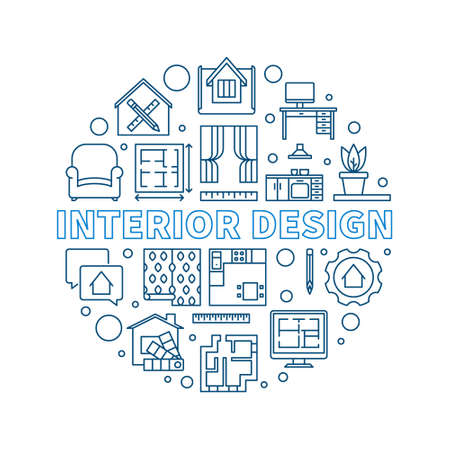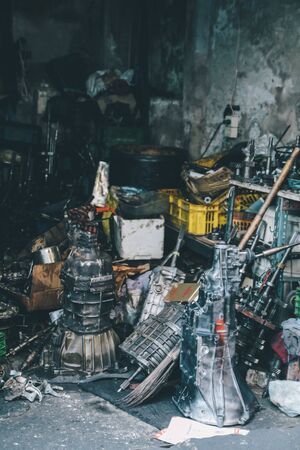Introduction to Restoring and Upcycling
When it comes to breathing new life into old furniture or decorative pieces, the terms “restoring” and “upcycling” are often mentioned in the UK’s creative and design circles. While these words might seem interchangeable at first glance, they actually refer to two distinct approaches, each with its own philosophy and cultural roots within British society. Restoration, or “restoring,” focuses on returning an item to its original state, respecting its heritage and craftsmanship—something deeply appreciated in a country where history and tradition are woven into daily life. Upcycling, on the other hand, is about transforming an object into something new or more valuable, often with a playful twist that reflects British ingenuity and sustainability values. Understanding these concepts, alongside the subtle differences in terminology such as “revamping,” “refurbishing,” or “reimagining,” is essential for anyone navigating the UK’s vibrant world of interiors and sustainable design. This article will explore how restoration and upcycling differ, why those differences matter in a uniquely British context, and how cultural preferences shape the ways we approach giving objects a second life.
Historical Roots and British Heritage
Britain’s relationship with restoration is deeply embedded in its historical narrative. From stately homes to iconic landmarks, the UK has long prioritised the preservation of its architectural and cultural heritage. This tradition goes beyond mere aesthetics; it reflects a collective respect for craftsmanship, history, and identity. The practice of restoration—meticulously returning objects or spaces to their former glory—has been crucial in safeguarding Britain’s tangible past for future generations.
The importance of heritage conservation in the UK cannot be overstated. Organisations such as English Heritage and The National Trust have played a pivotal role in restoring castles, manor houses, and public buildings, ensuring these sites remain accessible touchstones of national memory. Restoration in this context is often governed by strict guidelines to maintain authenticity and historical accuracy.
Upcycling, on the other hand, represents a more recent evolution within British society. While rooted in thriftiness—a value familiar to many British households post-war—upcycling has transformed into a creative movement that champions sustainability and individuality. Rather than restoring an item to its original state, upcycling gives new life and purpose to forgotten objects through imaginative reinterpretation. This approach not only prevents waste but also fosters personal expression within homes and public spaces alike.
Aspect |
Restoration |
Upcycling |
|---|---|---|
Primary Goal |
Preserve original form and function | Create something new from existing materials |
Cultural Significance |
Protects heritage and authenticity | Encourages sustainability and creativity |
Common Contexts |
Listed buildings, antiques, historic sites | Furniture, decor, fashion, everyday items |
Key Organisations |
The National Trust, English Heritage | Local makers, design collectives, online communities |
This blend of reverence for the past and forward-thinking creativity characterises the UK’s unique approach to both restoration and upcycling. Together, these practices offer distinct yet complementary ways of engaging with Britain’s rich material culture—honouring history while embracing innovation.

3. Aesthetic Approaches and Design Philosophy
When comparing restoring and upcycling within the UK context, their aesthetic outcomes and underlying design philosophies diverge significantly, reflecting both tradition and innovation in British interiors. Restoration typically strives for authenticity, preserving or returning an object or space to its original glory. The intention is to maintain historical integrity, using traditional methods and materials wherever possible—think Victorian fireplaces restored with period-appropriate tiles or Edwardian dressers lovingly refinished in deep oak stains. This approach resonates with the British appreciation for heritage and craftsmanship, often seen in classic country homes and London townhouses where original features are cherished.
In contrast, upcycling celebrates creative transformation, blending function with bold artistic expression. Rather than revering the past through faithful replication, upcycling reimagines materials or furniture into something entirely new—a discarded door becomes a statement dining table; vintage suitcases morph into chic bedside storage. Here, the emphasis is on individuality and environmental consciousness, aligning with the UKs growing sustainability movement and eclectic design trends seen in urban lofts or quirky cafés across cities like Bristol and Manchester.
Visually, restoration tends towards cohesive, harmonious finishes that respect the item’s provenance, while upcycling often embraces contrast—mixing textures, colours, and eras for a playful effect. British upcycling projects frequently incorporate whimsical elements: a splash of Farrow & Ball paint on reclaimed wood, mismatched handles salvaged from local markets, or fabrics sourced from iconic Liberty prints. These choices reflect the UK’s penchant for characterful interiors that tell a personal story.
Ultimately, both approaches hold creative value in UK design culture. Restoration honours continuity and nostalgia; upcycling champions reinvention and sustainability. Together, they allow homeowners and designers alike to balance timeless elegance with contemporary flair—an ethos at the heart of modern British style.
4. Sustainability and Environmental Impact
In the UK, both restoring and upcycling have gained momentum as creative responses to environmental concerns, yet their contributions to sustainability differ in subtle but significant ways. With the country’s increasing focus on the circular economy and reducing landfill waste, it’s essential to understand how each approach aligns with these values.
The Role of Restoring
Restoring typically involves bringing an item—often a piece of British heritage furniture or architectural detail—back to its original state. This process preserves historical craftsmanship, supports local artisanship, and extends the life of valuable objects that might otherwise be discarded. By prioritising repair over replacement, restoration reduces demand for new raw materials and cuts down on transportation emissions associated with importing new goods.
The Impact of Upcycling
Upcycling, meanwhile, embraces transformation and creativity. In the UK context, this could mean turning a weathered Victorian door into a statement dining table or converting old factory fittings into chic lighting fixtures. Upcycling diverts items from landfill by giving them a completely new function and aesthetic, often using minimal energy compared to recycling processes. It encourages resourcefulness and supports the growing community of British makers and independent designers who champion sustainable living.
Comparing Environmental Benefits
| Aspect | Restoring | Upcycling |
|---|---|---|
| Waste Reduction | Prevents disposal of heritage items; keeps original materials in use | Diversifies use of discarded materials; transforms waste into functional pieces |
| Circular Economy Contribution | Maintains value within existing products; supports traditional repair trades | Encourages innovation; creates new market value from old objects |
| Energy Consumption | Typically low; focuses on manual skills and minor material input | Variable; often low if repurposing without major processing |
| Cultural Preservation | High; conserves British design heritage and skilled craftwork | Moderate; may reference or reinterpret heritage in new forms |
Towards a Greener Future in the UK
Both restoration and upcycling play crucial roles in advancing the UK’s sustainability goals. Whether it’s through conserving treasured history or reimagining waste as opportunity, these methods support a mindful design culture that values longevity, creativity, and environmental responsibility—cornerstones for the future of British interiors.
5. Practical Applications and Everyday Examples
Across the UK, restoration and upcycling are not just trends but are woven into the fabric of daily life and design.
Restoration in Traditional British Homes
Step inside a classic Victorian terrace in London or a Georgian townhouse in Bath, and you’ll often find painstakingly restored features: original fireplaces, ornate cornices, and timber sash windows brought back to their former glory. Restoration in these homes aims to preserve heritage while subtly integrating modern comforts. For example, exposing and refurbishing parquet flooring or restoring stained glass panels is a common practice that maintains the soul of the property.
Upcycling in Contemporary Spaces
Meanwhile, upcycling shines in modern British flats, student digs in Manchester, or creative studio spaces in Bristol. Think dining tables crafted from reclaimed scaffold boards, vintage suitcases repurposed as side tables, or industrial lighting fashioned from old factory parts. Upcycling here is about personality and sustainability—injecting new life into forgotten objects with a distinctly British twist.
Pubs, Cafés, and Community Projects
The trend also spills over into public spaces. Many independent cafés in Brighton or Edinburgh showcase furniture made from upcycled church pews or school desks. Local pubs might feature restored Victorian bar counters alongside seating made from repurposed barrels. Community projects across the UK use both restoration and upcycling to breathe new life into neglected parks or historic buildings, creating shared spaces filled with character.
A Reflection of British Values
Whether it’s restoring an Edwardian staircase or transforming a discarded bike frame into a quirky lamp, these practical examples reflect a broader British appreciation for craftsmanship, history, and environmental stewardship. The blending of restoration and upcycling ensures that British interiors—old and new—remain unique, charming, and deeply connected to their local context.
6. Legal Considerations and Local Resources
When exploring the realms of restoring and upcycling within the UK, it’s essential to navigate the legal landscape with care. Both practices are influenced by a distinct set of regulations, especially when dealing with heritage or listed buildings. Understanding these rules not only protects your project but also preserves the unique character of British spaces.
UK-Specific Regulations
In the UK, planning permission is often required for significant restoration work, particularly if a property is listed or located in a conservation area. The Grade I, II*, and II listings under English Heritage impose strict controls over alterations to maintain historical integrity. Upcycling within such contexts—whether it’s revamping original fixtures or introducing reclaimed materials—must comply with these regulations to avoid legal repercussions.
Listed Buildings: Preserving Heritage
Restoring a listed building involves more than aesthetic sensibility; it demands respect for history and legal compliance. Any modifications, from window frames to interior layouts, require consent from local authorities. Even upcycling furniture or fittings within these spaces must be sympathetic to the building’s heritage, often necessitating specialist advice or collaboration with conservation officers.
Community Initiatives and Local Support
The UK boasts a vibrant network of community-led projects dedicated to both restoration and upcycling. Organisations such as The Repair Café Foundation and local salvage yards offer resources, workshops, and expertise for those keen on sustainable transformation. Council-backed initiatives often provide grants or guidance for restoring period properties, while regional reuse centres supply affordable materials for creative upcycling. Engaging with these networks not only fosters skill-sharing but also strengthens the community’s connection to its architectural legacy.
Navigating legal frameworks and tapping into local resources ensures that your restorative or upcycled project is both lawful and deeply rooted in British culture. By embracing regulation and community support, you contribute to preserving the nation’s rich design heritage while infusing new life into cherished spaces.
7. Choosing the Right Approach for Your Space
When it comes to deciding between restoration and upcycling for your British home, the right choice often depends on your property’s character, your personal style, and the heritage value of your pieces. Restoration is ideal if you wish to preserve the original charm of period features or heirlooms—think Victorian fireplaces or classic Ercol chairs. This method respects traditional craftsmanship and is especially valued in conservation areas or listed buildings, where authenticity is key. Upcycling, on the other hand, allows for more creative freedom and is perfect for injecting individuality into contemporary or eclectic interiors. It’s a sustainable option well-suited to reimagining ordinary finds from local car boot sales or vintage fairs into statement pieces tailored to your taste.
Tailoring Your Choice to British Homes
British homes vary widely—from Georgian terraces to post-war semis—so consider your space’s architectural language. For example, a restored Edwardian sideboard might feel at home in a period property, while an upcycled industrial lamp could be the highlight of a modern city flat. Let your home’s context guide you: restoration works best when you want to celebrate history; upcycling excels when you crave uniqueness and playful design twists.
Finding UK-Based Support and Suppliers
The UK boasts a vibrant network of specialists and suppliers catering to both restoration and upcycling projects. Seek out local antique restorers for expert advice on authentic materials and techniques—organisations like The Furniture History Society or The National Trust can offer guidance too. For upcycling inspiration and supplies, explore independent shops such as The Wood Recycling Store (Brighton) or online platforms like Etsy UK for unique handles, paints, and fabrics. Many community workshops across Britain also provide classes on both skills, fostering a spirit of creativity and sustainability.
Your Personal Style as the Final Touch
Ultimately, whether you choose restoration or upcycling should align with how you live and what inspires you. Embrace the rich tapestry of British design by mixing approaches—a lovingly restored Welsh dresser paired with a boldly upcycled chair can create a home that feels both rooted in tradition and refreshingly modern. Let your vision lead, drawing on the wealth of resources available throughout the UK to make your space truly yours.


